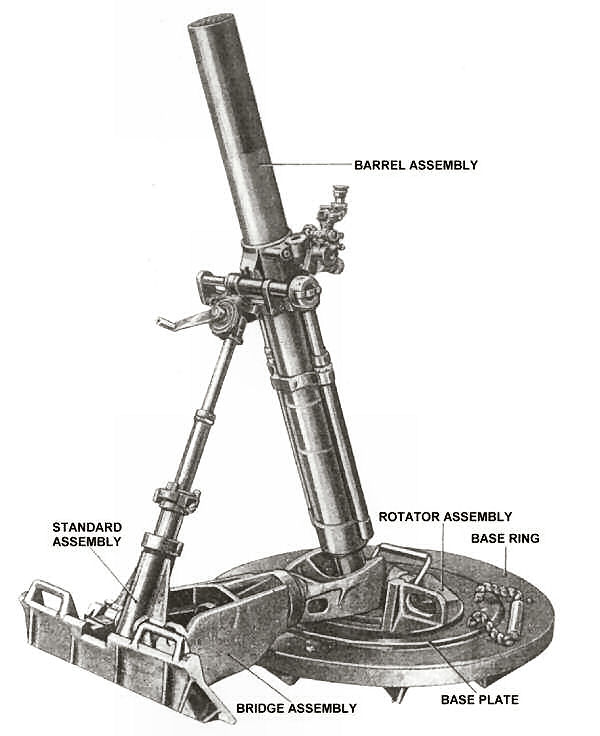| Issued to US forces beginning in 1951, the M30 gradually replaced the M2. The propelling charge consisted of a number of increments of propellent powder in the form of square sheets assembled on the cartridge container. When the round was inserted into the bore and released, it slid to the bottom where the firing pin drove the striker into the primer of the ignition cartridge. Flame from the ignition cartridge flashed through vents in the cartridge container extension to ignite the propellant, thus firing the round. Because of its size and weight, the weapon was used as Regimental artillery, often vehicle mounted, and was invaluable as support for infantry actions. Image on right: Heavy Mortar Co., 38th Regiment, U.S. 2d Infantry Division, firing an M30 4.2 Chemical mortar at Communist positions on Hill 773 near Yanggu, Korea, 13 August 1951. | 

